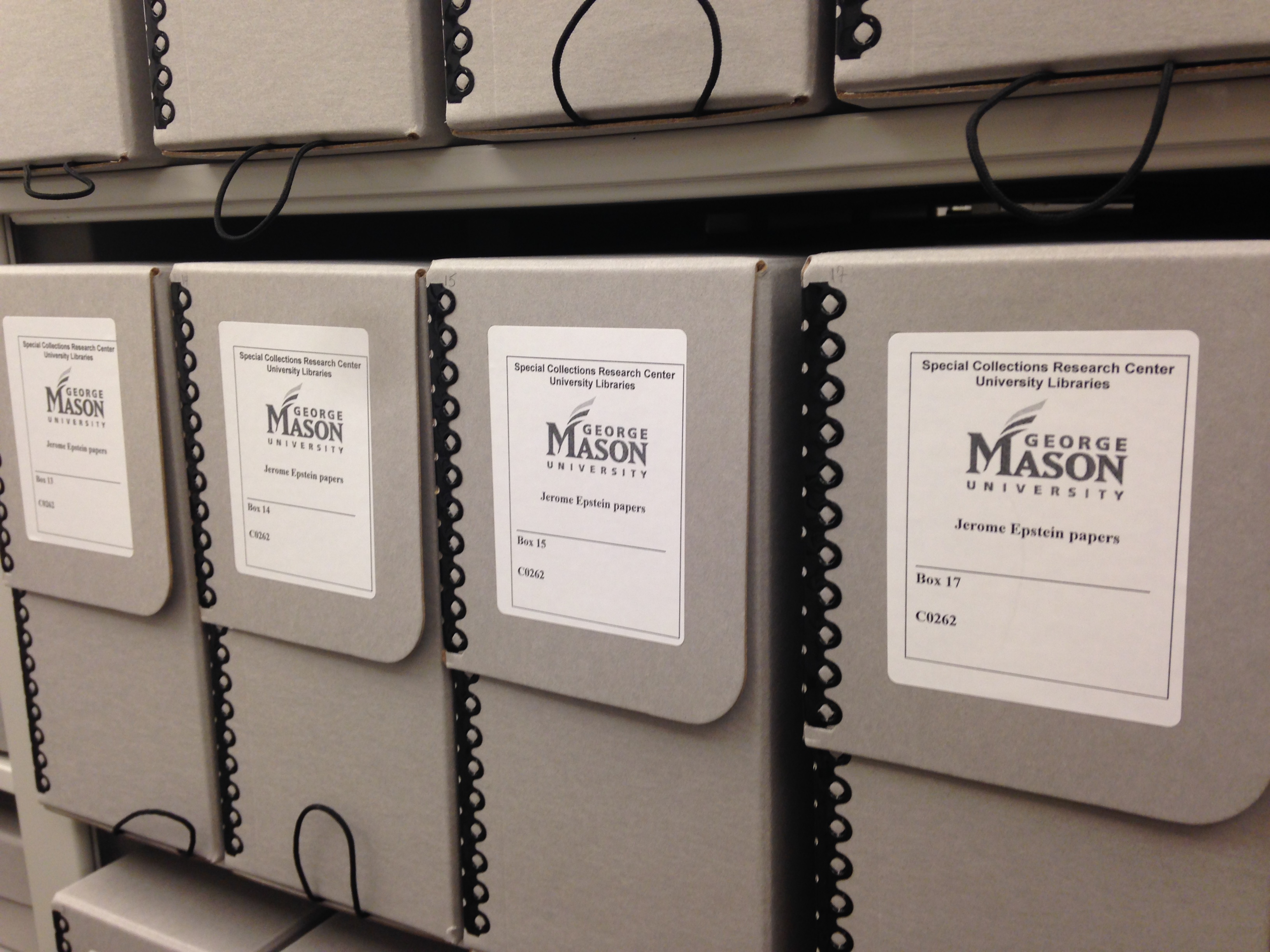
Ben Brands.
Ben Brands was the 2018 L. Claire Kincannon Intern at the George Mason University Libraries Special Collections Research Center. He holds a B.A. in History from the College of William and Mary and an M.A. in History at George Mason University, and is currently a PhD candidate at George Mason University. He has previously served as an infantry officer in the United States Army and as an Assistant Professor at the United States Military Academy at West Point.
Read Part One here.
In addition to the historical insights I discussed in the last entry, I also found working with the Epstein papers to be rewarding on a personal level. While most archival research focuses on finding useful evidence for making a historical argument, reading the Epstein papers letter by letter and word for word made me feel almost as if I got to know Jerome Epstein, Jr. This included gaining an understanding for his struggle with depression and homesickness, a topic he discussed with surprising openness and self-awareness. On a lighter note, it also allowed me to gain an appreciation for his love of food…he devoted a surprising amount of his letters to describing the better meals he had both in America and overseas, and developed a habit while serving in Italy of ending every page of every letter to his family with some variant of “please send food whenever you care to”.[1]
Pragmatically, the biggest part of this project involved simply reading and transcribing Jerome Epstein’s letters. However, both from my own background as a military historian and my view of the intent of this internship, I decided to spend a good deal of my work on providing context and connections to the letters as an eventual public digital history exhibit. Partially this involved leveraging the capabilities of digital platforms. For example, Jerome was extremely interested in theater, music, and motion pictures, and spent significant time describing them in his letters. In order to make the final digital transcriptions a richer, more contextualized experience, I sought to the greatest extent possible, to provide links within the transcriptions to full videos or descriptive sites for each movie or song he mentioned.
I also sought to provide historical context to the letters, which of course left much unsaid as they were written to contemporaries who could be expected to know all of the references made by Epstein. This involved both simple footnotes explaining terms and acronyms that might not be familiar to the average reader, as well as more substantial notes providing background information on the events Jerome Epstein experienced and described. In some ways this contextual research became, for me, the most important and rewarding part of the project, as exploring Jerome’s letters drove me to learn and understand World War II better, and led to some fascinating discoveries. Epstein’s comments, which wartime censorship rendered vague and obscure, led me to research into areas of the war that I had not previously known. When writing from overseas, World War II soldiers’ mail was censored by officers to ensure that no operation details were leaked that could get back to the enemy. Thus, in his letter of April 17th, 1945, Epstein wrote cryptically to his parents that “I imagine you have read in the papers about events going on over here lately. The fireworks have started, and the ‘Krauts’ will pay plenty for their evil.”[2] As Epstein’s letters rarely mentioned operational events, this piqued my curiosity and led me to research the operations of Epstein’s unit, the famed 10th Mountain Division, during April of 1945. What Jerome couldn’t write was that three days earlier his division had launched a major offensive against the German lines in Northern Italy; what he couldn’t yet know as he was writing was that on the very day he was writing this letter his division was breaking through the German lines in a victory that would lead to the surrender of all German forces in Italy less than two weeks later. Placing these obscure archival comments into their proper historical context is perhaps the most rewarding part of archival research and this internship.
This search for context was, in some way, the ultimate culmination of both the historical and personal elements of this project. It allowed me to make my own contribution to the project as a historian, and use my existing experience in interpretation and research to augment the archival skills the internship taught me. Furthermore, this research revealed and enhanced the historical significance of the collection. Finally, it led me, through a greater knowledge of Epstein’s era and experience, to feel an even greater personal connection to the man behind the collection of faded letters.
Citations
[1] One could, however, quibble with his description of gelato as “the so-called ice cream the Italians put out,” which not worth eating. Letter from Jerome Epstein, Jr. to Mr. and Mrs. Jerome Epstein and Mr. Lois Green, dated June 10, 1945. Jerome Epstein papers, #C0262, Box 1, Folder 4, Special Collections Research Center, George Mason University Libraries.
[2] Letter from Jerome Epstein, Jr. to Mr. and Mrs. Jerome Epstein, dated April 17, 1945. Jerome Epstein papers, #C0262, Box 1, Folder 4, Special Collections Research Center, George Mason University Libraries.
Follow Special Collections Research Center on Social Media at our Facebook, Instagram, and Twitter accounts. To search the collections held at Special Collections Research Center, go to our website and browse the finding aids by subject or title. You may also e-mail us at speccoll@gmu.edu or call 703-993-2220 if you would like to schedule an appointment, request materials, or if you have questions. Appointments are not necessary to request and view collections.

